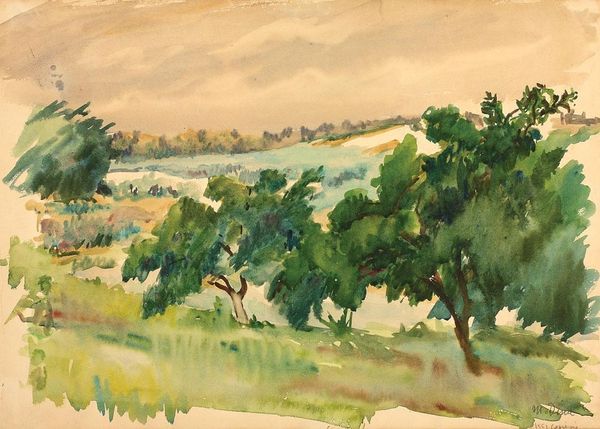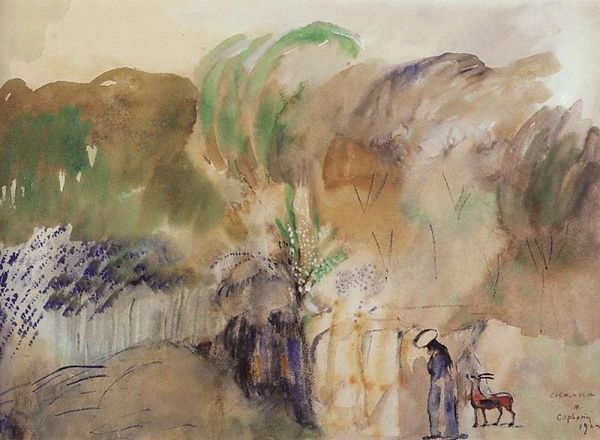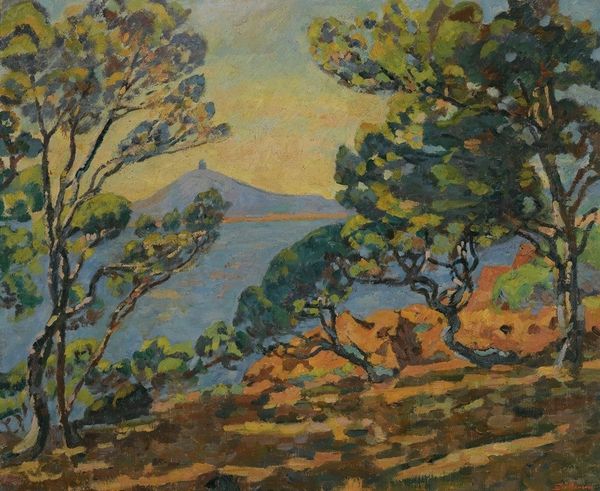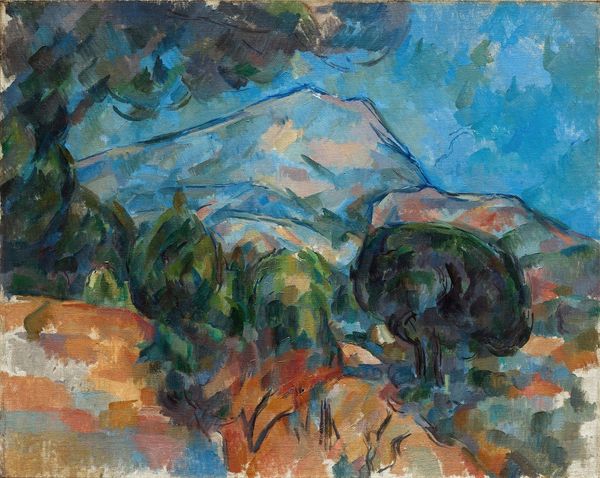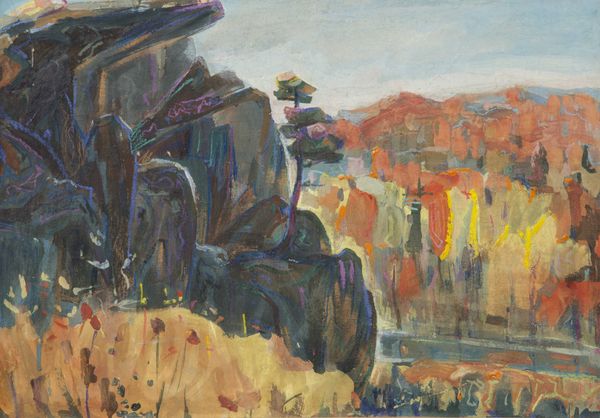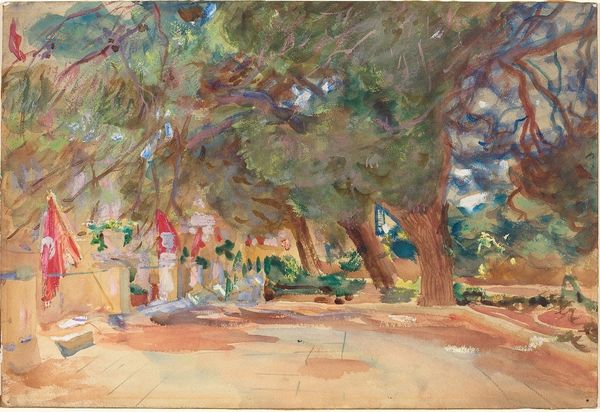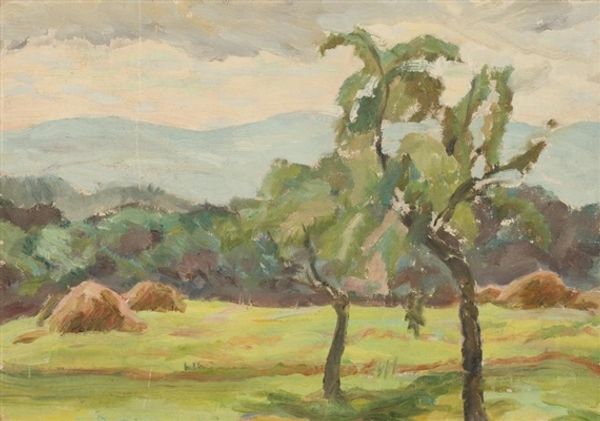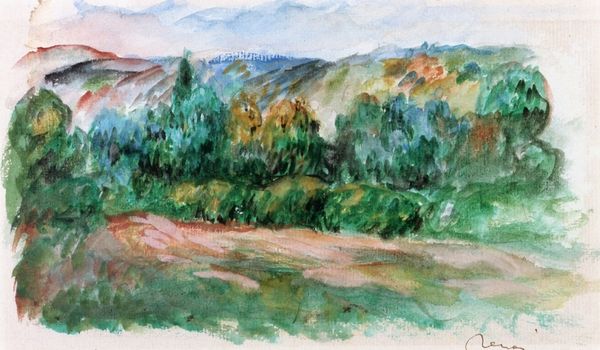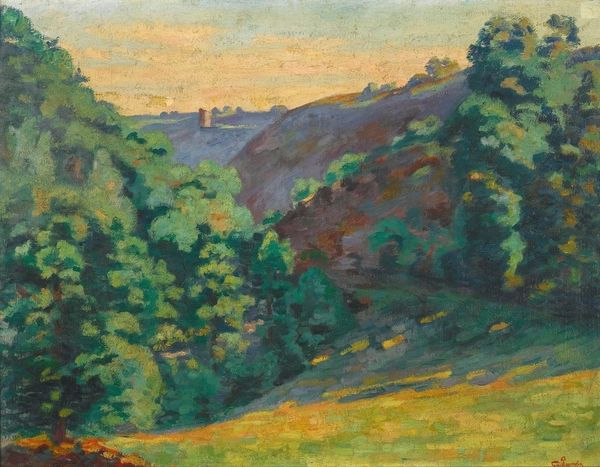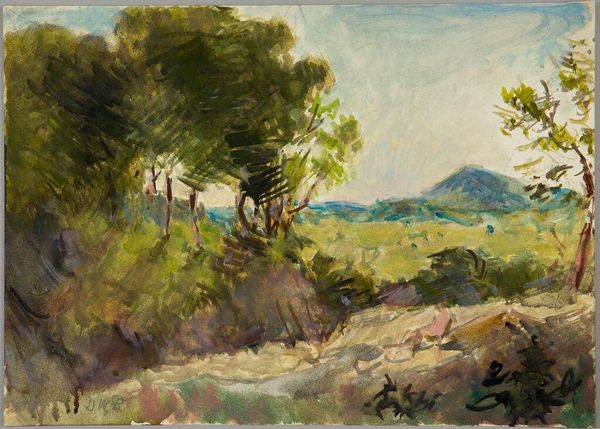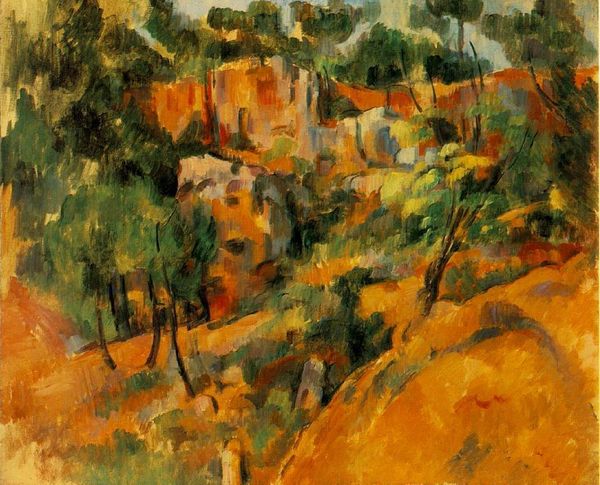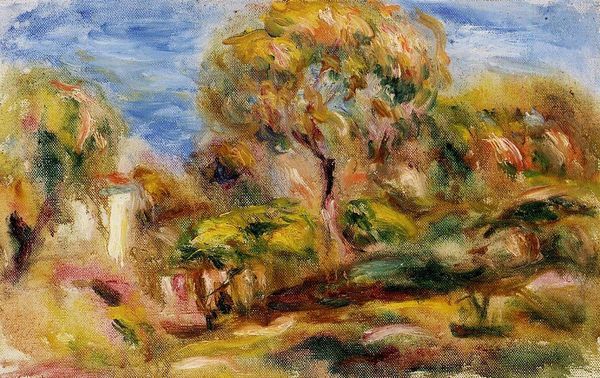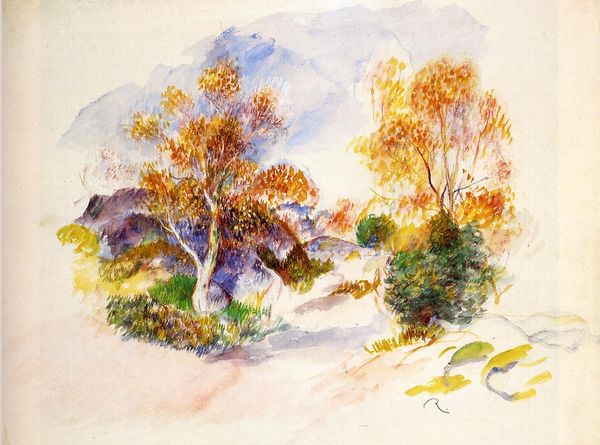
painting, plein-air, oil-paint, impasto
#
painting
#
impressionism
#
impressionist painting style
#
plein-air
#
oil-paint
#
landscape
#
impressionist landscape
#
oil painting
#
impasto
#
modernism
Copyright: Public Domain: Artvee
Curator: Looking at "Le Grand Arbre Au Bord De La Route", or "The Great Tree by the Roadside," painted by Pierre-Auguste Renoir in 1886, the first thing that strikes me is its warmth. The color palette feels like late afternoon sunlight. Editor: Indeed, it’s a gorgeous, somewhat idealized view of the French countryside. Beyond the immediate sensory impression, though, Renoir's representation brings forth many questions concerning land use and landscape painting as a symbolic tool of national identity during that period. The construction of leisure spaces... Curator: Let's not lose the wood for the trees, shall we? Note Renoir's application of paint—heavy impasto in sections, creating a shimmering surface that truly captures the fleeting qualities of light and shadow. It is an oil painting, naturally. This painting has a way of romanticizing labor, too. Look at the blurred, anonymous figures on the road—presumably laborers or perhaps families. Their toil is softened, even aestheticized, through Renoir's impressionistic lens. This aligns with the common contemporary narrative of celebrating the working class while simultaneously sanitizing the realities of their lives. Editor: The aestheticization of labour, that’s fair. Think about how this romantic ideal also functions in terms of the urban viewer’s imagined relationship to nature. The late 19th century saw industrialization rapidly transform urban environments, leading to a burgeoning interest in rural landscapes as spaces for recreation and escape. Works such as this catered to that longing, didn't they? Curator: Certainly. There's a feeling that everything’s in its place, fitting in a natural hierarchy that reassures its viewers. This goes along the artistic circles in France at that moment. Renoir’s approach can be seen as a very conservative form of aesthetic-political commitment in that specific art milieu. Editor: So, while the surface may seem idyllic, undercurrents of social dynamics and idealized perceptions run beneath the painting's surface. By thinking about it this way we might re-assess what the art piece is doing as it captures a time of immense transformation. Curator: Absolutely, recognizing that art always has an effect within culture allows one to think further beyond what art looks like, or is attempting to describe. Editor: It becomes a portal of possibilities. Curator: Indeed, it shows us new realities by interpreting existing ones.
Comments
No comments
Be the first to comment and join the conversation on the ultimate creative platform.
